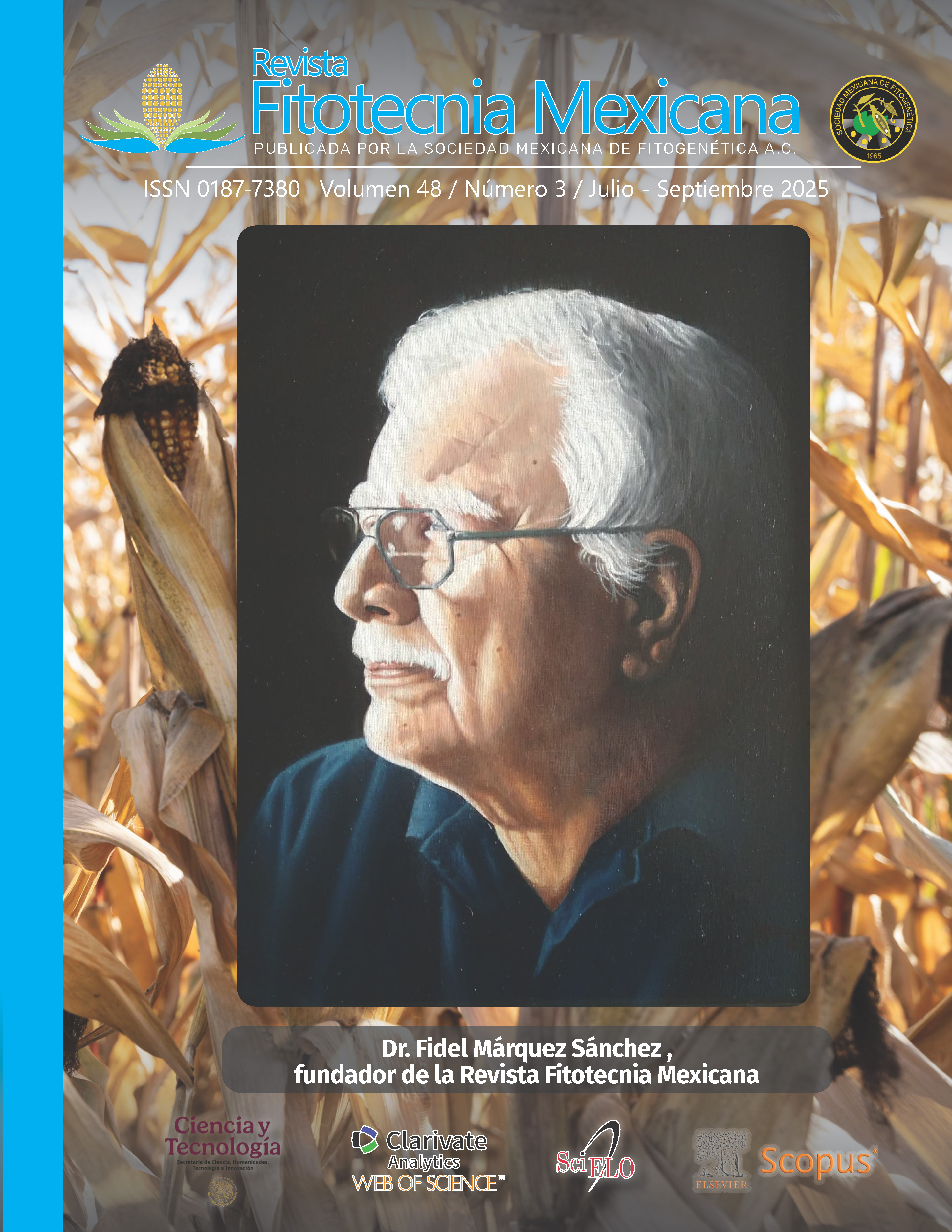FORAGE AND GRAIN YIELD AT THREE PHENOLOGICAL STAGES OF DUAL-PURPOSE MAIZE
Main Article Content
Abstract
In family livestock systems, the maize plant is usually harvested at commercial maturity, but it is associated with losses in yield and forage quality; thus, it is necessary to know about the changes in the production of dual-purpose maize forage at earlier phenological stages. The objective of this study was to evaluate forage yield in maize cultivars of dual-purpose at three phenological stages and determine the best stage for harvest considering grain yield. In the Spring-Summer 2020 and 2021 sesons, 15 maize cultivars were evaluated in San Mateo Capultitlán and Domingo Arenas, Puebla, Mexico in a randomized complete block experimental design. Combined analysis of variance and Tukey multiple means comparison (P ≤ 0.05) were performed. The variables measured were days to flowering, days to leaf drying, forage yield at the milky-doughy state, physiological maturity, commercial maturity, and grain yield. The average forage yield at the milky-dough stage was 13,360 kg DM ha-1 it and was reduced by 13 % (P ≤ 0.05) at physiological maturity and by 23 % at commercial maturity. Forage yield of open-pollinated varieties was similar to that of hybrids (P ≤ 0.05). At commercial maturity, the average yield of grain (8968 kg ha-1) and forage (11,159 kg ha-1) of the varieties with the highest number of days to silking was higher (P ≤ 0.05) by 23 and 20 %, respectively, compared to varieties with lowest number of days to this stage. For production of both forage and grain in family livestock systems, open-pollinated varieties and intermediate-cycle hybrids can be used and harvested at the stage of physiological maturity, as this results in higher forage yields without compromising grain yield.

